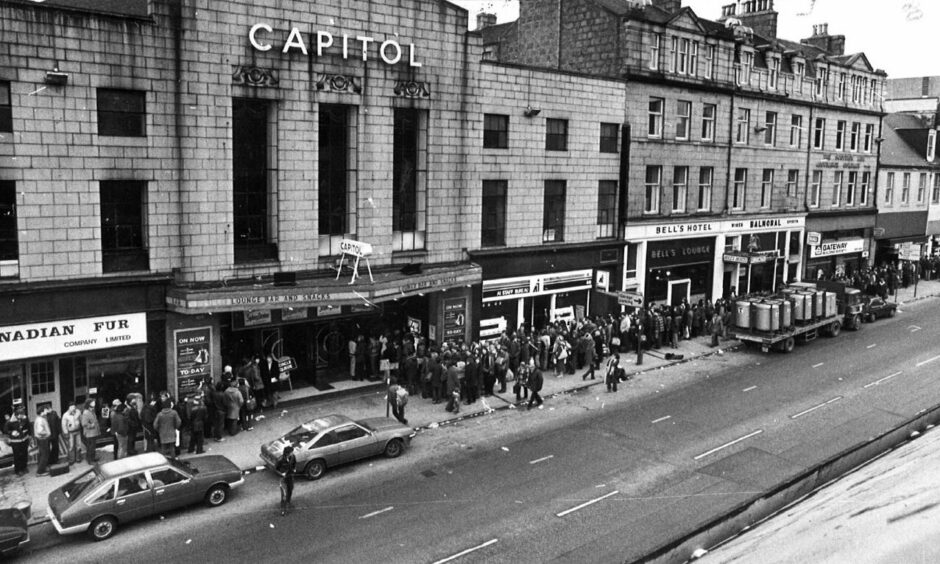
Aberdeen’s Capitol Theatre was graced by the likes of Johnny Cash, Queen, the Rolling Stones and Tina Turner before its final curtain call 25 years ago.
The end of a star-studded, entertainment-packed 64-year-long story was without ceremony when the stage lights dimmed forever on December 16 1997.
The surprise closure was announced by the guitarist of a touring Beatles tribute band.
The Bootleg Beatles dedicated Let it Be to the theatre after telling the sell-out audience it was the last song they would ever hear at the famous Union Street venue.
The lights went up and the fans filtered through the doors at the rear of the auditorium.
Final curtain call for Capitol Theatre
All that was left was precious memories.
The Capitol Theatre was one of Aberdeen’s early super cinemas. It was built in 1932 and opened on February 4 1933.
Boasting one of the most lavishly decorated interiors of its day, it could seat more than 2,000 people and had a Compton organ which was extremely popular.
The walls of the Capitol would resonate with the music as audiences were captivated by the action on screen during the silent era of Buster Keaton and Charlie Chaplin.
While silent films died out in the late 1920s to early 1930s, the organ carried on.
The venue branched into variety shows alongside the regular film showings, attracting stars such as George Formby and Frankie Vaughan.
The Donald brothers ran the business and at one point they owned an ice rink, 12 cinemas in Aberdeen including The Majestic, The Playhouse and the Queen’s Cinema, as well as cinemas in Inverurie and Stonehaven.
In the 1950s the Capitol stage was graced by a glittering array of stars including Alma Cogan, Tommy Steele, Bob Monkhouse, the Beverley Sisters and Petula Clark.
The Capitol closed for regular film showings in the 1960s but remained in use as a music venue which brought an even more impressive cast of showbiz legends.
It was there that tens of thousands of Aberdeen people – from screeching teenyboppers to scarf-waving great grannies – first clapped eyes on their heroes in the flesh.
The Rolling Stones played Aberdeen in 1964 and 1965
The full list reads like a who’s who of music.
The Rolling Stones performed at the Capitol Theatre twice on May 19 1964 in a month where they crammed in an amazing 45 shows before embarking on their first US tour.
Tickets ranged from five shillings to 15 shillings and the Stones set included Not Fade Away, Poison Ivy, Walking The Dog, Cops And Robbers and Roll Over Beethoven.
The Stones relished a hearty meal of sausages, eggs, bacon and chips in Laurencekirk on their way to another sell-out concert fraught with incident at the Capitol in 1965.
The group members left for the Granite City soon afterwards and were involved in a crash when their chauffeur-driven car collided with another vehicle at the rear entrance of the Capitol on a sunny June evening at the height of their fan adulation.
However, nobody was injured and the Stones hardly noticed the bump as they raced for the safety of the venue where they performed in front of screaming girls who tore their hair, wept, waved, sobbed and struggled with police and ushers.
Queen and Tina Turner also took to the Capitol stage
Freddie Mercury tossed roses to his fans when Queen performed at the Capitol in 1975 which coincided with Bohemian Rhapsody dominating the singles chart.
Tickets were £2 and £2.50 for the sold-out Aberdeen leg of Queen’s A Night At The Opera tour where Freddie and the boys played 22 songs on the cinema stage.
Bohemian Rhapsody was performed in full during the first half and set highlights included Killer Queen, Brighton Rock, Seven Seas Of Rhye and cover versions of Big Spender and Jailhouse Rock.
The Stones returned to the Capitol after a gap of 17 years and opened their European Tour in May 1982 with rooster-strutting Jagger at his pouting best.
The band came on stage and Jagger opened with the 60s classic Under My Thumb.
Throughout the evening several fans tried to enter the Capitol without tickets either through the front door or via second-storey windows.
Things were also hotting up inside the venue and Jagger threw a bucket of water over the crowd to cool them down.
Tina Turner performed twice at the Capitol on the evening of February 19 1984 which was among a gruelling 35-show schedule during a one-month tour of the UK.
After a huge build up, she appeared and purred: “You’ve been waiting a long time, and I know what you’ve been waiting for.”
The 45-year-old Turner prowled the stage like a lioness during the packed set which included songs like Proud Mary, Nutbush City Limits and Let’s Stay Together.
Other big acts to take to the Capitol stage in the 1970s and 1980s included Genesis, Wham!, U2, Depeche Mode, A-ha Duran Duran, Meat Loaf and Iron Maiden.
Johnny Cash walked the line in Aberdeen
Johnny Cash shrugged off a chest cold to Walk The Line at the Capitol Theatre in April 1991 which was promoting his 77th album The Mystery Of Life.
But Cash went on to prove there was still plenty of gas in the tank as he wowed his fans in Aberdeen with a flawless performance featuring 21 songs.
He got on stage and claimed the chill from the North Sea had got in to his chest.
Who could tell though, with a voice that always had the texture of granite chips in a tar boiler?
Cash performed for three hours and delivered some of his biggest hits including Ring of Fire, Folsom Prison Blues, I Walk The Line and A Boy Named Sue.
Morrissey arrived at the venue the following month on his first solo concert since The Smiths broke up which included a stage invasion from his adoring fans.
Vic Reeves and Bob Mortimer were among those on the Capitol balcony that night.
Chuck Berry arrived in 1995 and performed songs from his amazing career including Roll Over Beethoven, Carol, Johnny B. Goode and M Ding-a-Ling.
Goodbye to the Capitol, hello to Jumpin’ Jaks
However, with top stars increasingly now playing bigger venues, the Capitol’s days were numbered and that’s why the curtain came down for the last time in December 1997.
The B-listed site was mothballed in 1998 but reopened in 2003, operating as Jumpin’ Jaks-Chicago Rock bar and nightclub until 2009.
Jumpin’ Jaks opened its doors selling itself as ‘the best party in town’ with cheap drinks and free admission before 11pm or 10.30pm on Friday and Saturday.
Comedians, tribute bands, local cabaret acts, karaoke and “duelling pianos” would make up the entertainment to attract a cross section of clubbers.
Jumpin’ Jaks organised a series of acts to appear on student nights with “fun and games thrown in to make Wednesday a reason to have it large and cheesy”.
The first live act to appear on a Wednesday was The Wurzels – best known for their hits The Combine Harvester and I Am A Cider Drinker, with acts such as former teen heart-throb Chesney Hawkes also performing.
Capitol restored, but golden age won’t be repeated
The doors closed in 2009.
The old venue sat empty, derelict and damaged by water ingress after falling into a state of disrepair until developers moved in during 2013.
The Capitol has since been restored to its former art deco glory.
The seven-storey office development has kept its original features like the iconic stylised doors of the old theatre, light fittings and motifs which were restored.
Only memories remain of the never-to-be-repeated golden age of the Capitol.
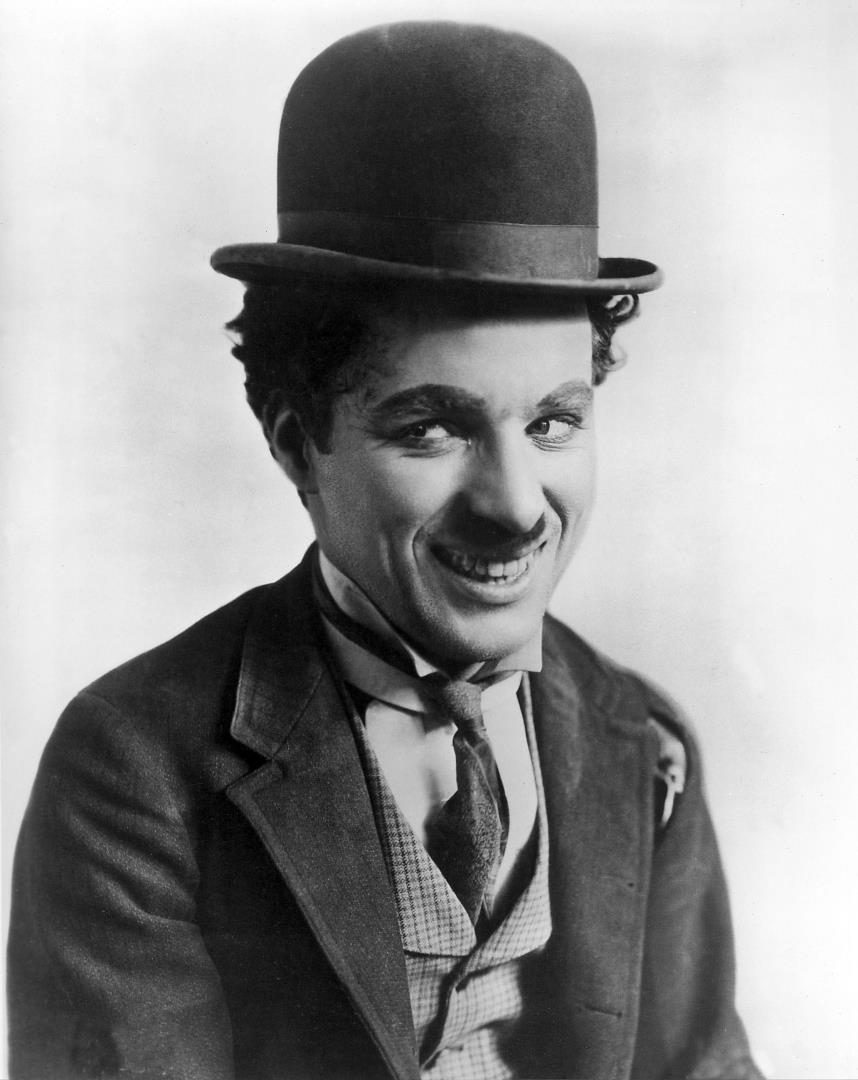
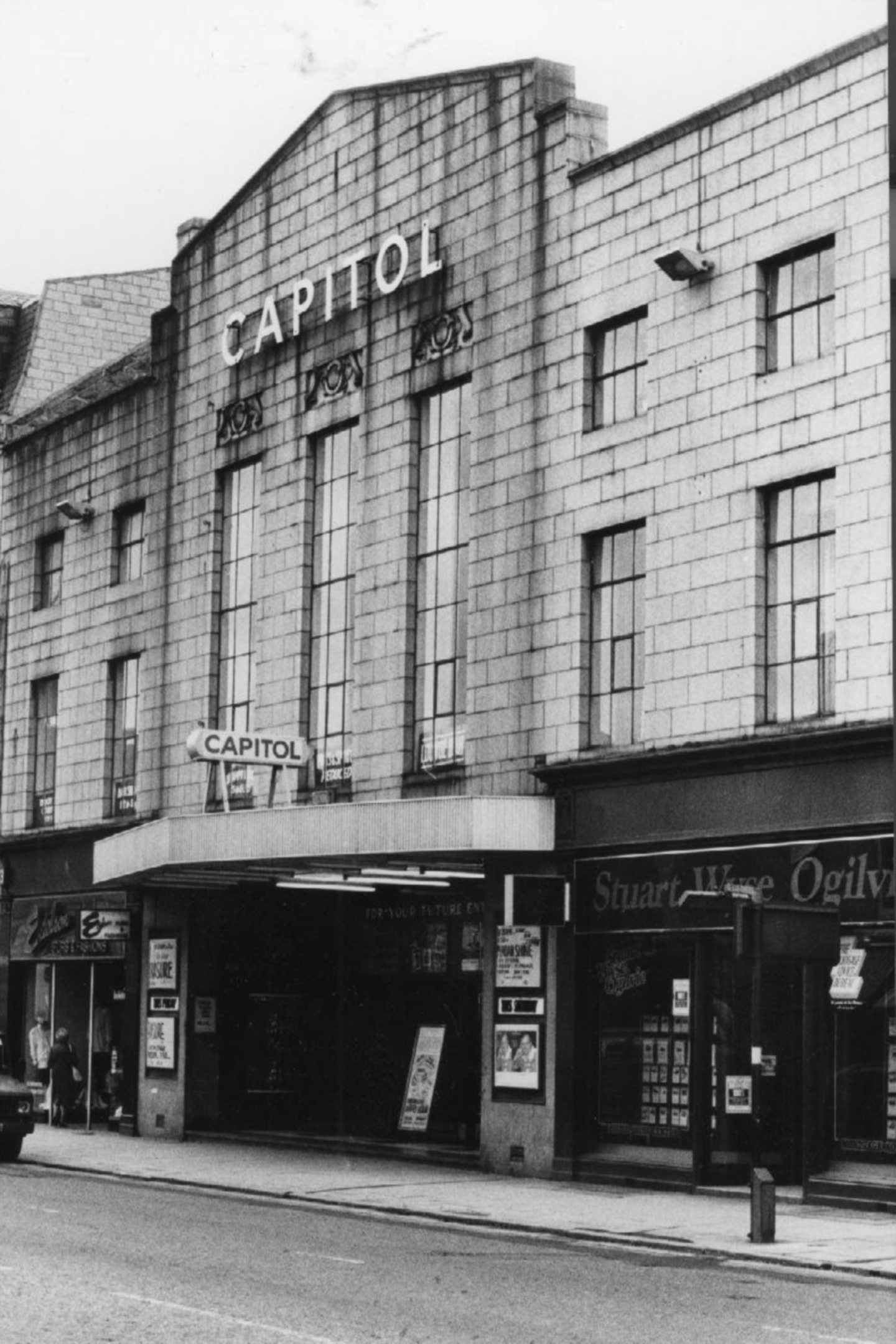


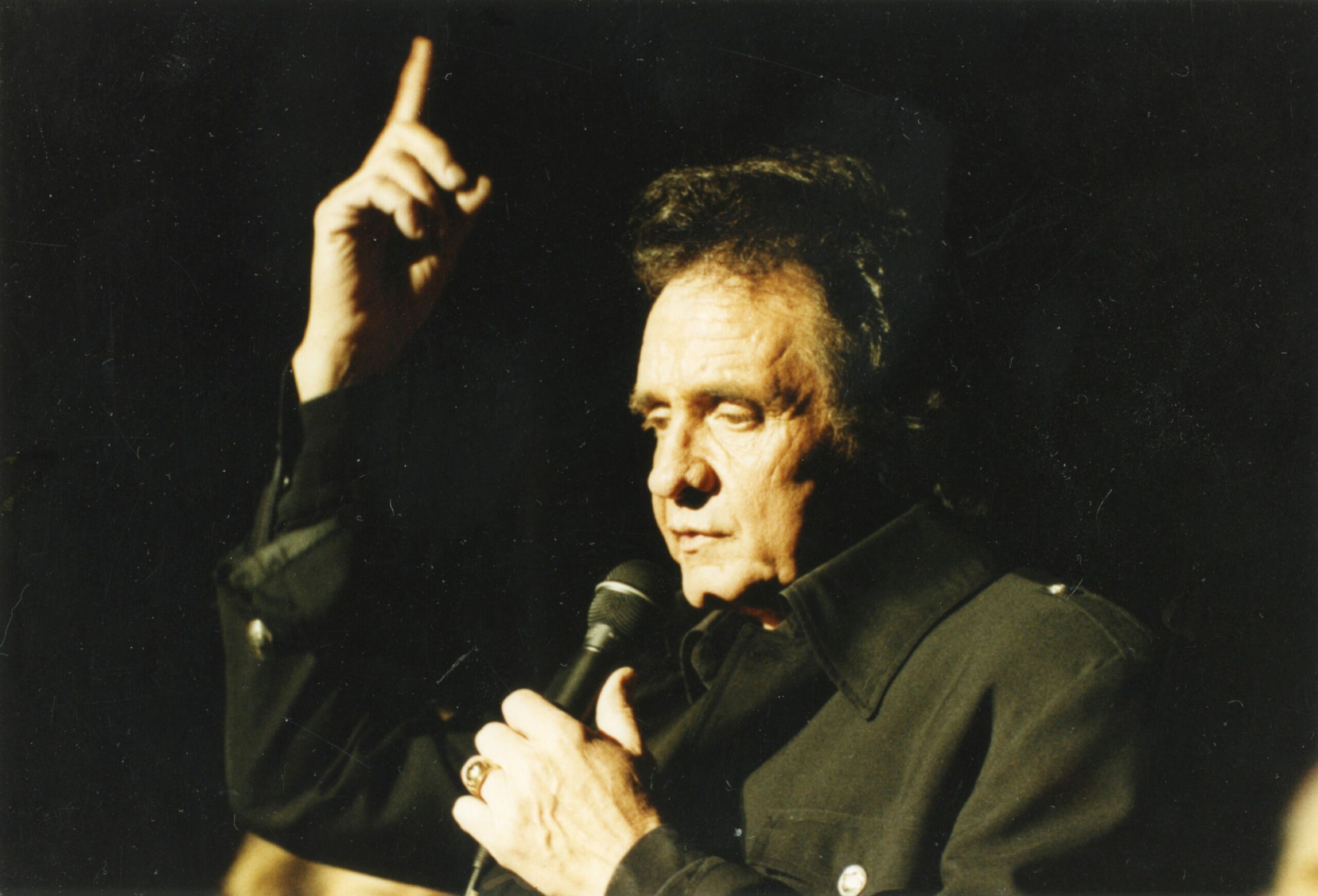

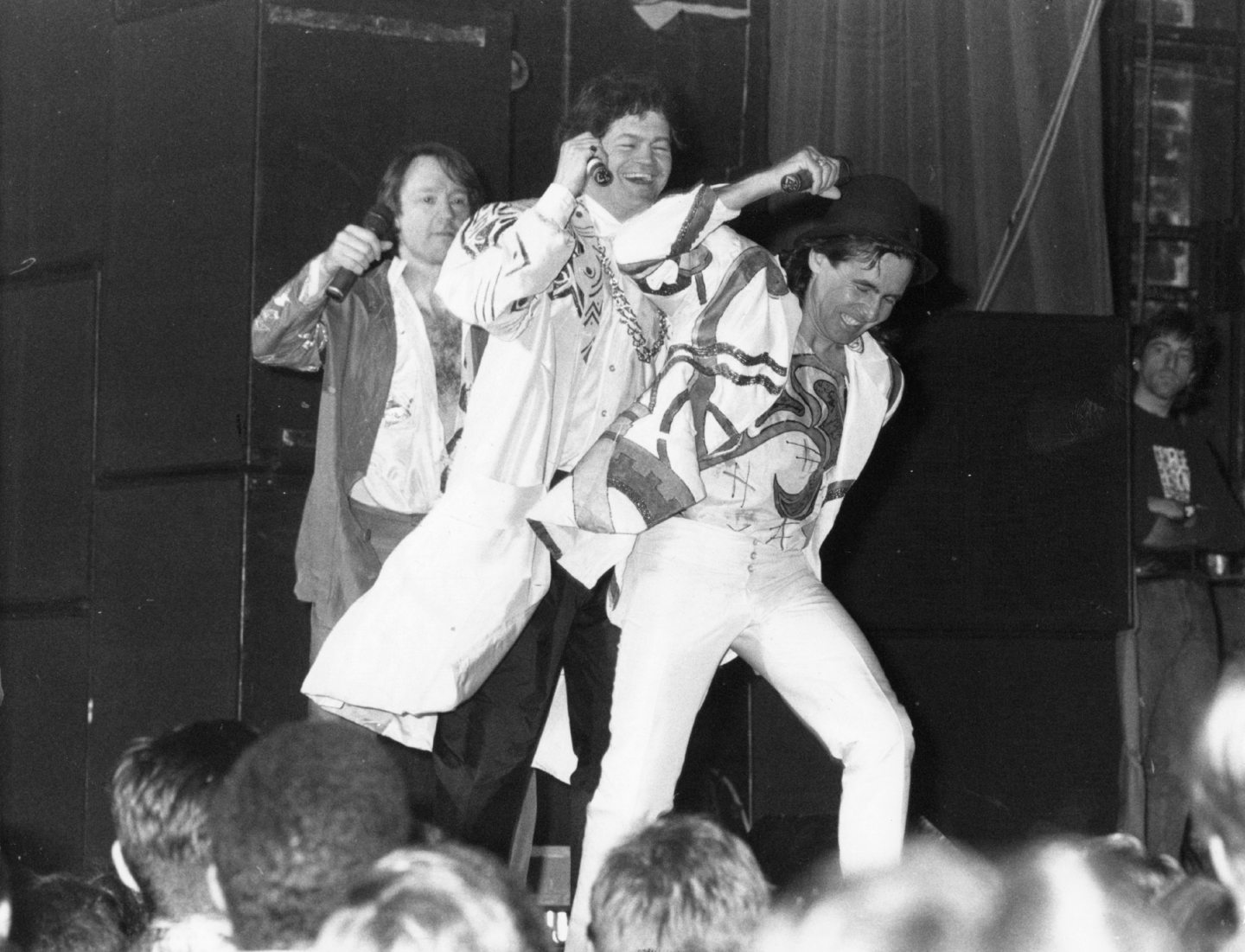
Conversation